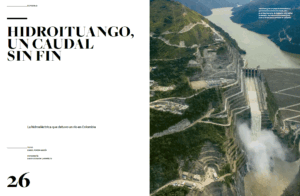Colombia is one of the most striking countries in South America. Its strategic location, with wide coasts on both the Atlantic and the Pacific oceans, allow it to be the liaison between the countries in the northern and southern hemispheres.
Colombia, with 1,141,178 square kilometers, (similar to France and Spain combined) has approximately 48 million people, with 70% living in urban areas and 30% in rural areas. Colombians are mostly mestizo, a mixed between native Indians, African, and European. In addition to the multiracial element, the following data will help to understand why this country is seeing as pure magic realism. 10% of the flora and fauna of the entire planet is in Colombia and the country also has the richest variety of orchids and palm trees. Colombia is the leader in fish population and second in the world in flora, amphibian diversity, and primates. One of every five bird species inhabits its territories.
Colombia has an impressive climate diversity that comprehends all altitudes: seacoast, plains, jungles, mountains, and snowcapped mountains. However, the sun’s ray lights always fall in the same vertical pattern, which means the country has only two distinctive seasons: rainy season (winter) and dry season (summer). This means, the country has the privilege to have two harvests annually. Is in this geographical, environmental, and human context, where for more than 500 years the political and historical events have shaped its cultural patrimony and its incommensurable beauty and richness: NOURISHING.
All live beings (plants and animals) eat, only humans nourish. However, to get to this cultural manifestation is necessary to observe the many moments of the daily routine and knowledge of the common Colombian. Colombia is not just a country; it’s more like a continent. Other countries barely equal the richness of this territory in culinary terms. This diversity gives Colombians an extraordinary variety of food of all types, animal and vegetal, which materialize in a cuisine so rich in its preparation methods that few people know –even the experts- and that any famous chef would be delighted to learn. Colombian cuisine starts in farms and ends in dining rooms and restaurants of popular small towns, villages, municipal counties, and farmers markets. The process involves seeding, harvesting, commercializing, preserving techniques, and preparation systems. It also involves a knowledge of materials like wood, calabash tree, guadua, stone, and vegetable fibers to make containers, and finally, it takes in consideration items so diverse as schedules and symbolic representations, medicinal and religious diets, beliefs and superstitions all revolving around the food.
Julián Estrada Ochoa. Anthropologist
[tg_grid_gallery gallery_id=»6279″ layout=»contain» columns=»3″]


